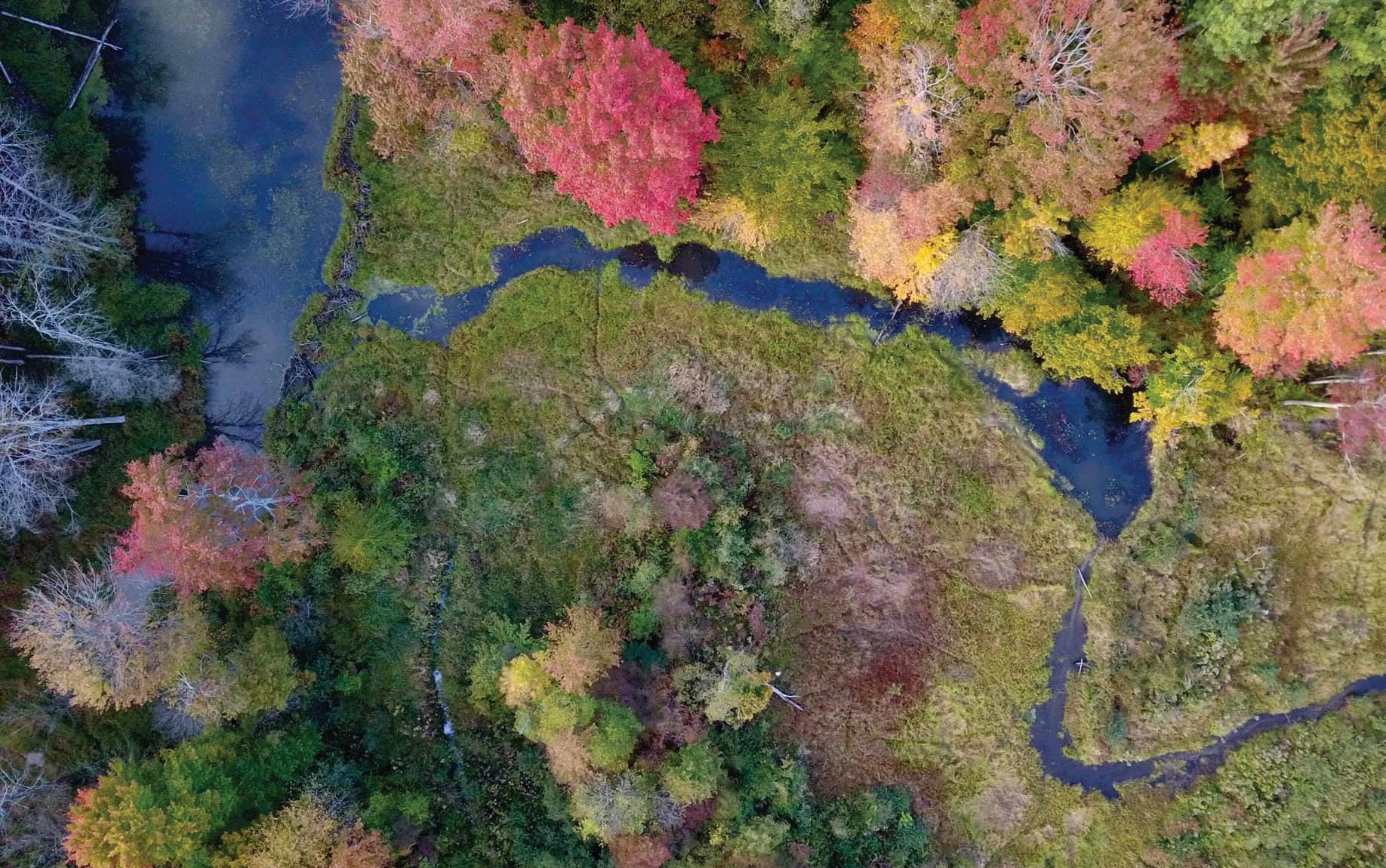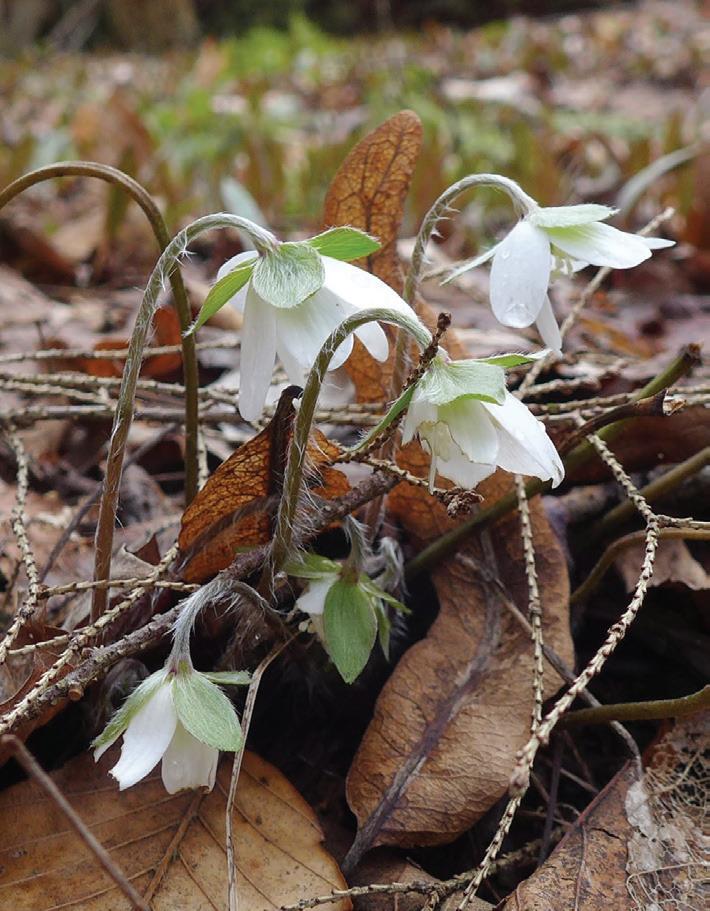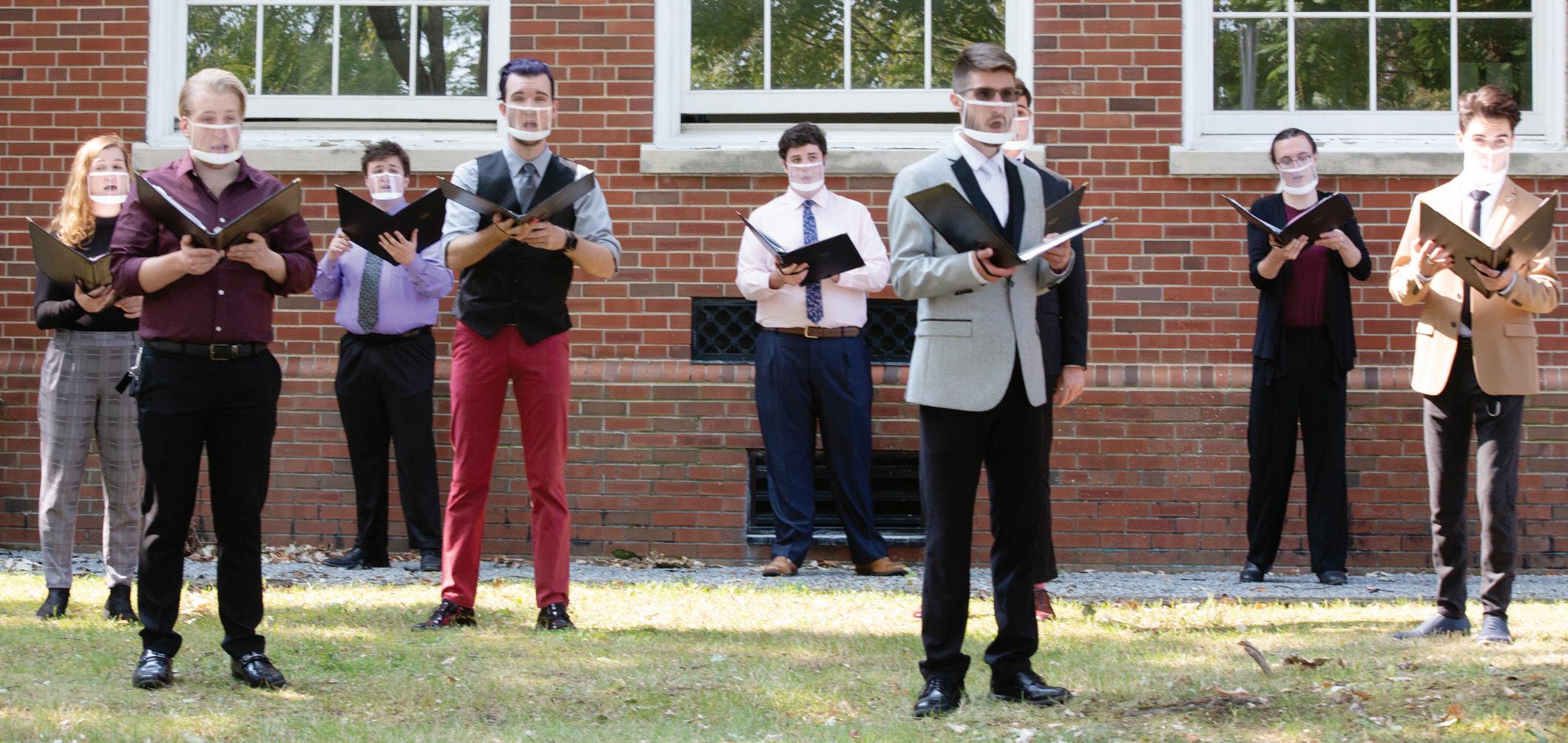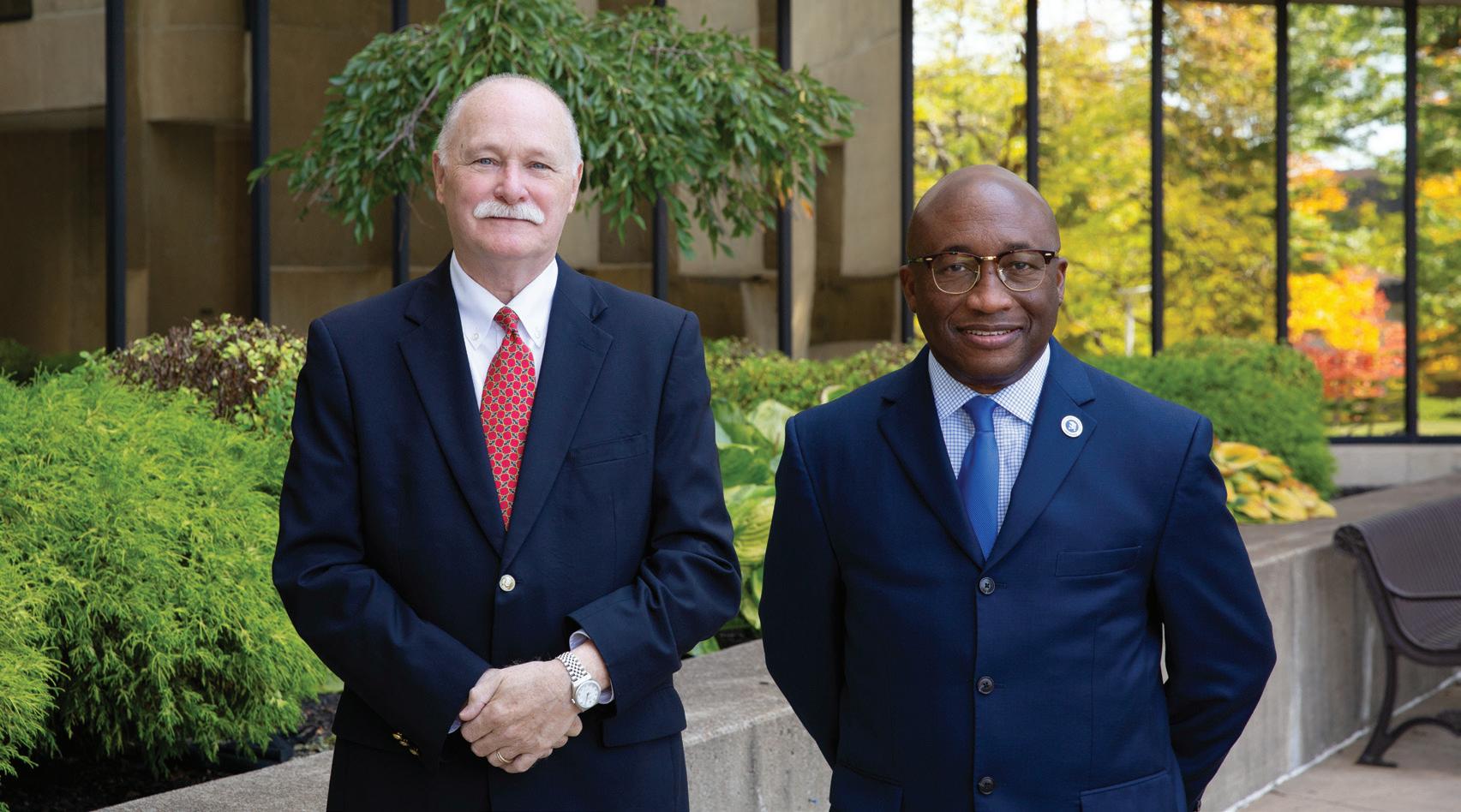
3 minute read
COLLEGE LODGE
A challenge met: the College Lodge Forest and the Western New York Land Conservancy
By Dr. Jonathan Titus, Department of Biology
The Western New York Land Conservancy had an agreement in place to purchase 168 acres of the College Lodge Forest from the Faculty Student Association (FSA), provided it could raise $790,000 by Dec. 31, 2020.
The land conservancy reported in January that it, “with help from the Friends of the College Lodge Forest, raised $790,000 to purchase the land and sustain it through the group’s Stewardship Fund. A $200,000 challenge gift was met by a Dec. 31 deadline.” The purchase price to the Faculty Student Association was $314,000 with the remaining $476,000 being held by the WNYLC for costs related to stewardship.

A group of hikers hears Dr. Jon Titus talk about his old growth monitoring plots in the hemlock forest. (photo by Priscilla Titus)
The College Lodge Forest is a community gathering place and one of the most beautiful natural areas remaining in Western New York. The property was purchased in 1939 by SUNY Fredonia students, with their own funds, for the main objective of promoting healthy outdoor activities and nature study. Generations of Fredonia alumni have hiked its trails and participated in nature studies on the property.
Since then, the land has been a prized learning laboratory for thousands of teachers, researchers, and students from around the globe. At least 144 species of birds, 15 species of reptiles and amphibians, 15 species of mammals, and more than 500 species of plants—including eight orchid species and four plant species considered very rare in New York State— exist on the property. It boasts a network of hiking trails, a pristine wetland and old-growth forest. Old-growth forests are rare in Western New York, and the College Lodge Forest is one of the best-preserved patches in the region. Interestingly, the land sits on a continental divide: on one side, rainwater drains toward Lake Erie and the Atlantic Ocean, while on the other side, it drains toward the Mississippi River and the Gulf of Mexico.
In addition, the College Lodge Forest’s unique position on the Portage Escarpment above the Lake Erie plain places it in an important bird migratory corridor.
FSA has owned the property and operated the historic lodge on the site since 1969. The cost of maintaining the land and all of the buildings is high, so the FSA decided to sell the forest to the WNY Land Conservancy. By purchasing 168 acres from FSA, the Land Conservancy will protect the forest and utilize modern land management techniques especially in regards to non-native invasive species control. The Land Conservancy will also improve the trail system by installing signage and educational materials. FSA will be able to invest funds from the sale into the stewardship of visitor facilities on the portion of the property it retains. FSA will continue to own and operate the lodge and the surrounding 33 acres.

An aerial view of autumn colors in the large freshwater marsh at the College Lodge. (photo by Jude Merchant)
Myself, a SUNY Fredonia Department of Biology Professor, and my wife, Priscilla, the WNY Land Conservancy's staff ecologist, have been actively engaged in the campaign to protect the forest. The College Lodge forest is an irreplaceable natural resource. The old growth forest is unique and the marsh is one of the most pristine in the region. It is critical that the lands are permanently protected and properly managed.
The 168-acres of forest that the land conservancy is purchasing includes miles of hiking, snowshoeing and cross-country ski trails. Once the sale is completed, the Land Conservancy will maintain it as a publicly accessible nature preserve that will continue to benefit Fredonia students, faculty and staff, as well as the FredoniaDunkirk community and the entire region.
To learn more about the College Lodge Forest and the WNY Land Conservancy efforts, visit online at https://www.wnylc.org/college-lodge-forest. Thank you to everyone who contributed to this effort.

Vivid late afternoon reflections on the surface of the marsh. (photo by Jude Merchant)

Snow covered hemlock boughs. (photo by Priscilla Titus)

Hepatica is one of many spring ephemerals that only thrive in undisturbed forest communities. (Photo by Jon Titus)










